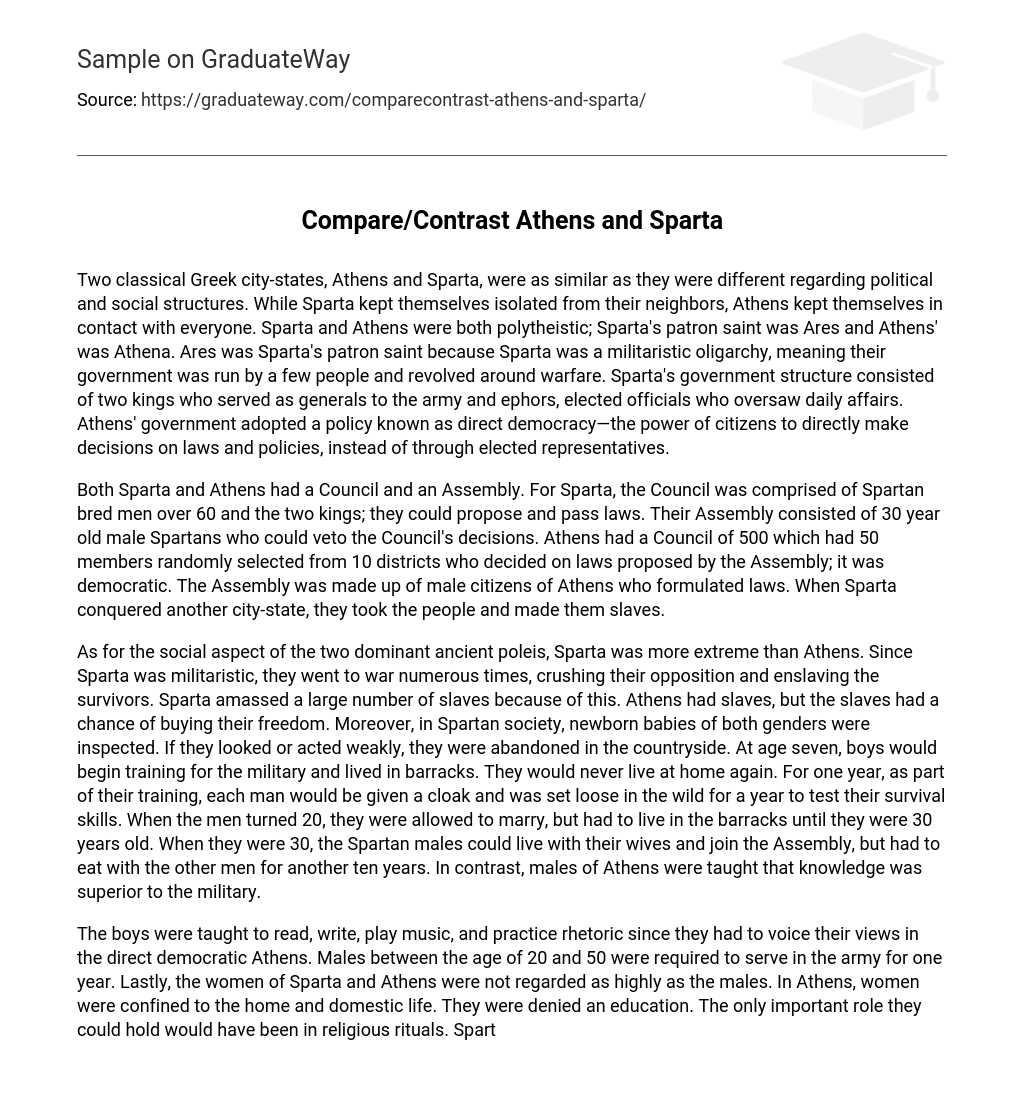Both Athens and Sparta, two classical Greek city-states, had similarities and differences in their political and social structures. While Athens maintained contact with neighboring states, Sparta chose to isolate themselves. Religion played a significant role in both city-states, as they were both polytheistic. Ares served as Sparta’s patron saint due to its militaristic oligarchic government, which was controlled by a few individuals and centered around warfare. Sparta’s government structure consisted of two kings serving as army generals, along with elected officials called ephors who handled daily affairs. In contrast, Athens embraced a policy of direct democracy, where citizens had the power to make decisions on laws and policies without elected representatives.
Both Sparta and Athens had a Council and an Assembly. In Sparta, the Council included men over 60 who were of Spartan descent and the two kings. They possessed the authority to propose and enact laws. On the other hand, the Assembly in Sparta was composed of male Spartans who were 30 years old. They had the power to veto the decisions made by the Council.
In Athens, there was a Council of 500 individuals. This council consisted of 50 members who were chosen randomly from 10 different districts. They were responsible for making decisions regarding laws proposed by the Assembly. Unlike Sparta, Athens operated as a democracy.
The Assembly in Athens consisted of male citizens who were involved in formulating laws. It is important to note that when Sparta conquered another city-state, they would enslave its inhabitants.
Sparta and Athens, both ancient poleis, differed in their social aspects. While Sparta was renowned for its extreme militarism and enslavement of enemies during wars, resulting in a significant number of slaves, Athens also had slaves who were given the opportunity to purchase their freedom.
In Sparta, newborns would be examined and abandoned if deemed weak. Boys began military training at age seven and resided in separate barracks away from home. As part of their training, they underwent survival tests where they lived in the wilderness with only a cloak.
Upon reaching 20 years old, Spartan men could marry but still had to reside in barracks until 30. At that point, they were allowed to live with their wives and join the Assembly; however, they were obligated to share meals with other men for an additional ten years.
In contrast, Athens prioritized knowledge over military training for males.
In direct democratic Athens, boys were instructed in various skills such as reading, writing, music, and rhetoric to express their opinions. Men aged 20-50 were obligated to serve in the army for one year. In both Sparta and Athens, women had lower status compared to men. In Athens, women had limited roles confined to domestic life without education, except for participation in religious rituals. Conversely, Spartan women enjoyed greater independence through education and rigorous physical training. The primary responsibility of Spartan women was to bear healthy children, especially males. Like Athenian women,Spartan women were required to obey their fathers and husbands. Consequently,differences existed between the governmental structures of Spartans and Athenians but both societies operated under a patriarchal system.





